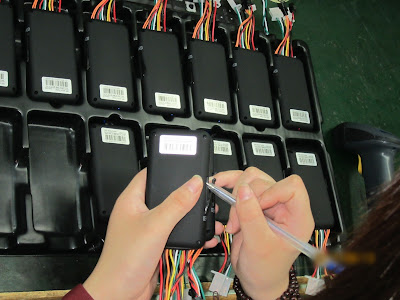Personal vehicle tracking devices and Map Databases
One major challenge with map matching before electronic tracker was available was the initialization of the system when the starting position was not known. In early navigation systems, the user sometimes had to be prompted to enter the current position. Of course this was difficult if the user did not know where they were! With GPS, the absolute position is readily determined, and, in time, GPS receivers were added to navigation systems. Initially, GPS was only used to get the DR/map matching system started or to detect large errors. Then systems emerged where the GPS/DR trace was compared with the digital road map in order to find the most probable location of the vehicle. Today, most navigation systems rely primarily on GPS and use DR and map matching to correct GPS errors and bridge the coverage gaps. A robust map matching implementation uses confidence measures to determine all possible road segments in the map on which the vehicle could be traveling.
In order to support map matching, the map data should have high position accuracy, ideally better than 15m, to minimize incorrect road selections. The map data should also be topologically correct, reflecting the real-world road network, so that the algorithm does not get confused if the user drives on a road that is not in the database. The expected accuracy of the road centerline data should be used in the map-matching process to determine the overall confidence region of the map matched position solution. Once a match is determined, the vehicle position is then displayed on the matched road segment and used for the route guidance instructions. This reference position may be treated as a single position fix by the integration filter, which serves to correct or improve the accuracy of the absolute position determined by GPS tracker for Car.
Further, if map matching has determined, with high probability, that the vehicle is traveling on a specific road in the database and that road is straight, then a heading fix may be generated for the integration filter based on the bearing of that road segment according to the map database. Another way to utilize the heading information after a turn is to impose a constraint on the model to force the heading of the vehicle to match the bearing of the road. Map feedback can be used instead of DR sensors to improve the performance of GPS in low-cost navigation systems. In addition to the horizontal position components of road vectors, ground elevation data may be used to augment the performance of vehicle GPS tracking device .
Terrain elevation data has not yet been used widely to augment GPS; this will likely change in navigation and driver safety systems once elevation information is integrated into digital road maps. Map calibration is very similar to the process of using GPS data to calibrate inertial and other DR sensors. For example, with the same set of conditions that support the heading fix generation, the constant road heading may be used to calibrate a low-cost gyro or magnetic compass. Since the road heading is constant, the gyro reading is then a direct measure of its bias. Another example is when the vehicle makes a turn at an intersection, the change in heading between the inbound segment and the outbound segment can be used to calibrate a heading sensor. With the current performance of GPS, map calibration of sensors is less common than it once was.
In order to support map matching, the map data should have high position accuracy, ideally better than 15m, to minimize incorrect road selections. The map data should also be topologically correct, reflecting the real-world road network, so that the algorithm does not get confused if the user drives on a road that is not in the database. The expected accuracy of the road centerline data should be used in the map-matching process to determine the overall confidence region of the map matched position solution. Once a match is determined, the vehicle position is then displayed on the matched road segment and used for the route guidance instructions. This reference position may be treated as a single position fix by the integration filter, which serves to correct or improve the accuracy of the absolute position determined by GPS tracker for Car.
Further, if map matching has determined, with high probability, that the vehicle is traveling on a specific road in the database and that road is straight, then a heading fix may be generated for the integration filter based on the bearing of that road segment according to the map database. Another way to utilize the heading information after a turn is to impose a constraint on the model to force the heading of the vehicle to match the bearing of the road. Map feedback can be used instead of DR sensors to improve the performance of GPS in low-cost navigation systems. In addition to the horizontal position components of road vectors, ground elevation data may be used to augment the performance of vehicle GPS tracking device .
Terrain elevation data has not yet been used widely to augment GPS; this will likely change in navigation and driver safety systems once elevation information is integrated into digital road maps. Map calibration is very similar to the process of using GPS data to calibrate inertial and other DR sensors. For example, with the same set of conditions that support the heading fix generation, the constant road heading may be used to calibrate a low-cost gyro or magnetic compass. Since the road heading is constant, the gyro reading is then a direct measure of its bias. Another example is when the vehicle makes a turn at an intersection, the change in heading between the inbound segment and the outbound segment can be used to calibrate a heading sensor. With the current performance of GPS, map calibration of sensors is less common than it once was.


Comments
Post a Comment